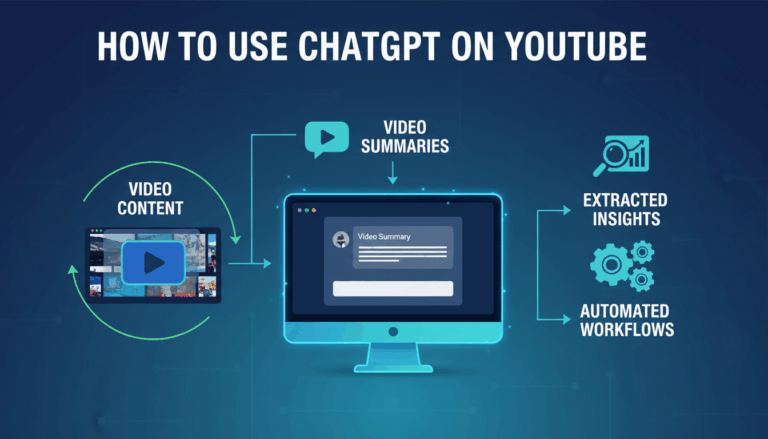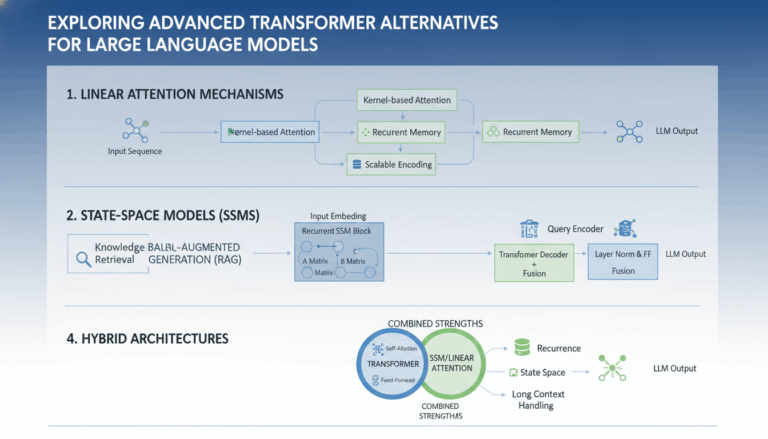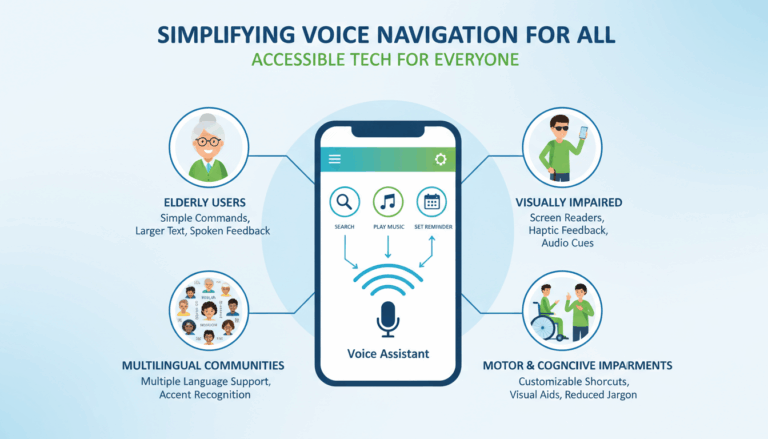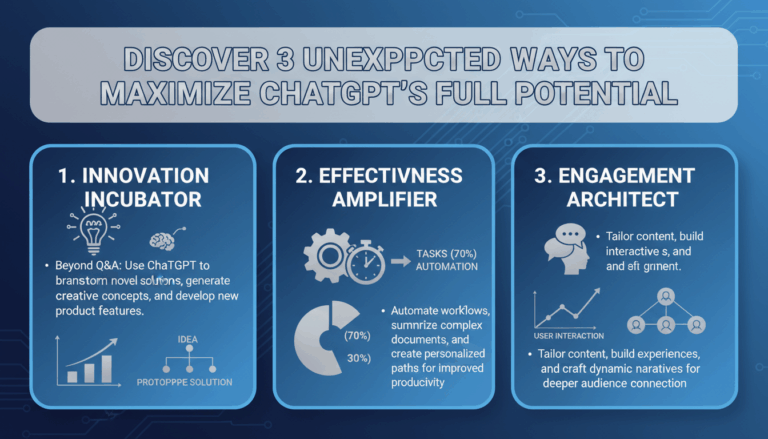Introduction to ByT5 and Its Significance in NLP
The field of Natural Language Processing (NLP) has undergone significant transformation with the advent of advanced neural architectures that have efficiently handled the intricacies of human language. One of the most notable advancements in this domain is Google’s ByT5, a variant of the Text-to-Text Transfer Transformer (T5), which marks a shift from traditional subword tokenization to byte-level models. This transition addresses many challenges faced by previous NLP models, making ByT5 a significant breakthrough.
Traditional NLP models often rely on subword tokenization, a method that breaks down words into smaller, more manageable pieces called subwords. This approach, while effective, has certain limitations, especially when it comes to handling languages with complex morphology or processing text data containing non-standard expressions, such as usernames or code snippets. Subword tokenization can also lead to complicated preprocessing requirements, requiring a comprehensive vocabulary for effective operation.
ByT5 proposes a solution by eliminating the need for pre-tokenization through its byte-level processing capability. This approach reads raw byte sequences directly, allowing the model to work with any character in any language without needing additional pre-processing steps. This universal applicability is particularly beneficial for multilingual processing, allowing ByT5 to perform efficiently across diverse languages without predetermined vocabularies for each.
An essential aspect of ByT5’s efficiency lies in its ability to understand and process inputs at a byte level, which drastically simplifies text inputs, allowing it to better capture the nuances of text, especially in the case of long-tailed languages where rare words might be frequent within specific contexts. This byte-level approach reduces the misrepresentation of underrepresented languages or dialects, and because it bypasses the complications of tokenizing multilingual texts, it becomes a game changer for global NLP applications.
Moreover, ByT5’s byte-level approach reduces the model’s dependency on vast vocabularies that are characteristic of traditional token-based systems. As such, it contributes to more efficient storage and processing, making NLP systems faster and more scalable. The simplicity of this method is evident in the ease with which ByT5 handles large datasets across different languages simultaneously, offering enhanced performance and a more seamless integration into NLP workflows.
A concrete example of ByT5’s utility can be found in processing non-standard text, such as social media data, which often includes emojis, hashtags, and abbreviations. Traditional tokenization might struggle with such inputs due to the absence of these symbols in standard vocabularies. ByT5, however, processes each byte individually, facilitating a more accurate and context-aware representation of the original text.
By embracing a byte-level decoding strategy, ByT5 simplifies model training and deployment processes in real-world applications, making it easier for developers to build robust NLP solutions without the constraints of extensive pre-processing pipelines. This evolution toward byte-level models not only underscores an important shift in NLP but also promises a more inclusive future where language technologies can better serve diverse global communities.
Understanding Subword Tokenization and Its Limitations
Subword tokenization has been a cornerstone in the evolution of Natural Language Processing (NLP) models. This method involves breaking down words into subword units, allowing models to efficiently process extensive vocabularies by reducing the size of the working vocabulary. Subword tokenization emerged as a middle ground in tokenization strategies, balancing between character-level tokenizations, which often require more extended processing, and word-level tokenizations, which can be too rigid.
In more detail, subword tokenization addresses the issue of out-of-vocabulary (OOV) words by fragmenting novel words into recognizable subword units. This feature is particularly useful in languages with rich morphological structures and in handling compound words or neologisms. For instance, if an NLP model encounters the word “unhappiness” and it is not part of the model’s vocabulary, the model can effectively interpret this word as the subwords “un-“, “happi-“, and “-ness”. This enables the model to glean meaning from new words based on known subword components.
The Byte Pair Encoding (BPE) technique is one of the most prevalent algorithms for performing subword tokenization. BPE starts with a base vocabulary of characters and iteratively merges pairs of characters or subwords to form longer units. This dynamic process allows the model to adapt its tokenization strategy based on the frequency of subword pairs, making it particularly effective across different languages and domains.
However, subword tokenization is not without its limitations. A primary concern is the potential for fragmentation in languages with complex scripts or unique syntactic structures. For example, languages like Japanese and Korean, which use characters that convey meaningful components of words, can suffer from inappropriate splits that fail to preserve semantic meaning or context continuity. Moreover, subword tokenization is highly dependent on the initial training corpus. If certain subwords or word forms are underrepresented during training, the algorithm might struggle to tokenize accurately, leading to inefficiencies in downstream tasks.
Another significant limitation lies in handling non-standard text, such as casual conversation on social media, user-generated content, or code snippets. These types of data often contain abbreviations, emojis, or unique domain-specific jargon that might not align well with the statistical structure of subwords derived from standard text corpora. This misalignment can lead models to produce suboptimal representations or even incorrect results for these data types.
Additionally, the creation and storage of a comprehensive subword vocabulary can be resource-intensive. The model needs access to this vocabulary during both training and inference, which demands significant computational resources. As the vocabulary size grows, so does the storage requirement, potentially leading to increased latency during processing.
Despite these challenges, subword tokenization remains a powerful tool in NLP, providing a versatile and often effective balance in tokenization. However, the advent of byte-level processing models, such as ByT5, offers promising alternatives by addressing some of these inherent limitations. By moving beyond the need for predefined vocabularies, byte-level processing can seamlessly handle any linguistic input without the intensive preprocessing required by traditional subword models.
The Shift to Byte-Level Processing: How ByT5 Operates Without Tokenization
In the evolving landscape of Natural Language Processing (NLP), the advent of ByT5 represents a significant paradigm shift in how models process text data. Traditional models have relied heavily on tokenization methods, particularly subword tokenization, to break down texts into manageable units. These earlier methods have facilitated language understanding up to a certain extent but come with their limitations, especially when dealing with diverse and non-standard data forms.
ByT5, however, turns this approach on its head by employing byte-level processing, circumventing the need for pre-tokenization altogether. This method involves reading and processing raw text as sequences of bytes rather than words or subwords. By converting each character into bytes, ByT5 can handle any text format, making it flexible and robust across languages and circumstantial data.
Understanding Byte-Level Processing
At the core of ByT5’s operation is byte-level processing, a method that indulges in the finest details of text composition. Unlike tokenization, which divides text into predefined vocabulary tokens, byte-level processing treats each character in its raw byte form. This approach seamlessly accommodates any script or character set, bypassing traditional tokenization challenges related to vocabulary size and coverage.
Each character, including punctuation and special symbols, is converted into its byte representation. For example, the phrase “Hello!” is interpreted as a series of bytes that directly correlate to each character’s ASCII values in the text. This fundamental mechanism enables ByT5 to directly handle a wide range of inputs such as emojis, non-Latin scripts, and even binary or coded symbols, frequently present in internet and social media communications.
Benefits of Byte-Level Processing
-
Language Agnosticism: Byte-level processing eradicates the need for language-specific tokenization. By handling compounds of bytes, ByT5 can inherently process any language without requiring tailored preprocessing steps for each language type. It elegantly sidesteps issues such as the frequent re-training required for models when encountering new languages or dialects.
-
Inclusivity for Non-Standard Texts: In environments where standard alphabets merge with special symbols or emojis, ByT5 performs remarkably well. Social media updates, which are replete with unconventional language elements such as hashtags (#trending) or emojis (🚀), pose no problem to a byte-based model. This capacity effectively minimizes the representation error prevalent in previous models limited by static vocabularies.
-
Efficiency and Scalability: By operating at a byte-level, ByT5 reduces the need for extensive pre-processing tools and vocabulary storage. Models become significantly lighter in memory requirement, which translates to faster processing speeds and improved scalability. This improvement is crucial when deploying models in environments with limited computational resources or when managing exceptionally large datasets.
Implementation in Model Architecture
ByT5’s architecture maintains the elegance of its predecessor T5, while integrating byte-level processing abilities. The model reads the byte sequence inputs directly into its encoder and applies self-attention mechanisms akin to traditional transformer networks. Despite the increased sequence length from processing at the byte level, ByT5 efficiently manages these inputs by leveraging computational optimizations in its internal computations.
Moreover, due to the elimination of a predefined vocabulary, the complexities around embedding layers, often necessary for token-based models, are streamlined. ByT5 instead implements byte embeddings, which assign unique values corresponding to each potential byte, allowing it to efficiently understand the contextual relationships between byte sequences.
Use Case Scenarios
Consider a multilingual chatbot application intended to function seamlessly across different languages and dialects. Traditionally, such a system would require extensive tokenization rules and language models tailored for each supported language. With ByT5’s approach, however, the chatbot processes inputs universally as byte sequences. This results in a single, consistent model that adapts to any language based simply on the data fed into it, offering significant operational simplicity and reduced overhead.
In another scenario, digital platforms deploying sentiment analysis on social media or online product reviews are faced with a colorful tapestry of human expression, where traditional tokenizers might falter. ByT5’s byte-level processing ensures all inputs are handled with comparable accuracy and coherence, devoid of the need for exhaustive token dictionaries.
In this innovative context, ByT5 exemplifies the potential of moving beyond tokenization, emphasizing how byte-level processing can redefine efficiency and inclusivity in the realm of NLP.
Comparative Analysis: ByT5 Versus Traditional Token-Based Models
In the realm of Natural Language Processing (NLP), the advent of innovations like Google’s ByT5 represents a significant leap away from traditional token-based methodologies. To appreciate the transformation introduced by ByT5, it is critical to delve into a comparative analysis against traditional token-based models, predominantly relying on subword tokenization.
Traditional token-based models, such as those utilizing Byte Pair Encoding (BPE), have been foundational in the NLP landscape. BPE and other subword tokenization methods address the impracticality of word-level tokenization by fragmenting words into smaller components, enabling models to grasp the nuances of language across diverse contexts. This approach efficiently manages out-of-vocabulary words and reduces the size of the vocabulary needed for processing languages with rich morphological characteristics.
However, these models encounter limitations when handling languages with complex syntax or non-standard expressions, such as slang, social media shorthand, or mixed-language text. For instance, a word like “love” expressed in different scripts or combined with emojis in social media posts can present challenges for token-based models reliant on predefined vocabularies.
ByT5 diverges from these approaches by deploying byte-level processing. This innovation allows ByT5 to decode each character as a byte, inherently bypassing the need for tokenization and offering several advantages:
-
Universal Character Processing: ByT5’s byte-level approach enables it to process any input text, regardless of the language or script, without the need for specific tokenization rules for each language. This attribute contrasts sharply with token-based models that often require substantial retraining to acquire new vocabulary for each new language or dialect.
-
Multilingual Flexibility: A significant limitation in token-based models is the necessity to maintain separate vocabularies tailored for each language. ByT5 circumvents this by working directly with byte sequences, ensuring seamless integration across languages and facilitating multilingual applications, thus streamlining cross-linguistic interoperability.
-
Efficient Handling of Non-Standard Text: ByT5 excels in environments where texts frequently incorporate non-standard elements like emojis, hashtags, or domain-specific lingo, which traditional models struggle to represent accurately. In contrast, ByT5 represents each unique symbol as a byte, ensuring that interpretations remain contextually consistent.
-
Simplified Model Architecture: ByT5 eliminates the cumbersome preprocessing pipelines needed for token-based models. Unlike tokenizers that require extensive preprocessing and vocabulary creation, ByT5’s byte embeddings reduce computational overhead, enabling faster learning and deployment.
-
Resource Efficiency: ByT5’s architecture is inherently more resource-efficient. Without the necessity of extensive vocabularies, it yields reduced model size and facilitates faster computations, making it practical for applications in environments with limited computational resources.
An illustrative example of these advantages can be seen in tasks involving real-time translation services. While token-based models necessitate comprehensive tokenization and tailored models for each target language, ByT5 can process and translate input text in one robust framework without additional adjustments, thus supporting real-time multilingual interactions with minimal latency.
Moreover, recent studies indicate that byte-level models like ByT5 maintain or even improve performance metrics such as accuracy and fluency in translation and comprehension tasks when compared to their token-based counterparts. These findings underscore ByT5’s transformative potential in redefining scalability and inclusivity in the digital language processing arena.
In summary, ByT5’s departure from traditional token-based methods towards byte-level processing reflects a significant shift in NLP strategy, offering unparalleled flexibility, efficiency, and multilingual capabilities that traditional methods find challenging to match.
Implementing ByT5: Practical Applications and Use Cases
The adoption of ByT5 in practical applications introduces a plethora of opportunities for enhancing and diversifying natural language processing tasks. By leveraging its byte-level architecture, ByT5 provides solutions that are both versatile and innovative, functioning effectively across varied domains.
One of the most noteworthy applications lies in multilingual translation services. ByT5 functions seamlessly with multilingual datasets, processing text at a byte level which allows for more inclusive translations without the need for extensive pre-processing. For example, in an application like Google Translate, harnessing ByT5 can lead to more accurate and fluent translations across multiple languages, even those with complex scripts or dialectal variations.
In the realm of social media analytics, ByT5 proves highly beneficial. Social media platforms are characterized by vast amounts of user-generated content in an array of formats, including text mixed with emojis, hashtags, or slang. Unlike traditional models, ByT5’s byte-level processing provides nuanced understanding of these diverse inputs without falling prey to tokenization errors, thus offering a more precise sentiment analysis or topic classification.
Additionally, ByT5 finds significant utility in building robust customer service chatbots. Given its ability to handle diverse linguistic inputs, organizations can implement chatbots capable of understanding and responding in multiple languages natively. This capability minimizes the need to create separate language models, reducing development time and costs while ensuring cohesive service delivery.
In the medical field, ByT5’s application extends to processing clinical notes and patient records, often replete with acronyms and domain-specific terminology. Historically, token-based models have faced challenges with such non-standard text because of their reliance on pre-existing vocabularies. By processing at a byte level, ByT5 can accurately interpret these intricate data formats, thereby supporting improved data management and analysis for healthcare professionals.
Furthermore, ByT5 can transform the development of educational technologies. Many educational content platforms aim to cater to a global audience, requiring adaptive language learning tools. Through ByT5, these platforms can seamlessly integrate multilingual content delivery, thereby personalizing learning experiences based on a user’s native language and proficiency level.
Finally, in the domain of cybersecurity, ByT5 contributes to the detection and analysis of phishing attempts often encoded with varied text formats, attempting to bypass conventional detection algorithms. ByT5’s byte-level reading capability ensures that such malicious content is more likely to be detected, offering advanced protection measures.
To implement ByT5 effectively, developers must integrate it into their current NLP pipelines with attention to architectural adjustments, primarily focusing on ensuring that processing systems accommodate the increased byte sequence length. Additionally, retraining existing models with datasets inclusive of a variety of text formats will help optimize ByT5’s performance for the intended application. By embracing such comprehensive and inclusive implementation strategies, ByT5’s potential can be fully harnessed across diverse technological landscapes.



